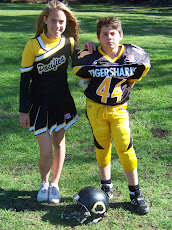Now that your flexibility is getting better, you'll probably notice that some of the back pain has dissipated.
Time for rehabilitative exercises, and ones you should keep doing even after your pain has gone away. Note: a traction bench is usually a good purchase. They run about $250 -$275, and can be found at Perform Better or Power Systems websites.
OK, now it's time to work. Your number one priority is safety -more specifically, do not do anything that hurts your back. One thing you will definitely learn while getting back into exercising is proper mechanics, because your back will tell you if you are doing it right or wrong. Things you used to do easily, and didn't think much about, suddenly get a lot of your attention because you will realize that the way you were performing some movements were actually WRONG! If you want to turn back pain into an educational experience (and you should), you will use that back as a personal trainer.
1-Core: one muscle group that should be attacked is the glutes. Yes, you heard me - the glutes. Typically, when the back goes out, it's because you were using it too much to lift your body up, pick things up, etc. The muscle group that's SUPPOSED to perform those movements are the gluteals (maximus and minimus). Why is it under my core list? Because it IS a core muscle. Forgotten, and your back does the work or supporting your upper body against gravity at all angles, in all positions. Not a good thing. The back muscles were designed to be supporters, not movers.
To get to your glutes, you need to do any exercise where you can get your knees above your hips : lunges, step ups, sumo squats, and overhead squats are my exercises of choice. No machines, either. Free body motions, very light weight at most, and keep your weight on your heels, not your toes or the balls of your feet. You want your core muscles above your hips working to support your spine while you exercise your glutes. Perform motions slowly, and keep a natural spine position - no arching the back.
2- Core: Lower abs. These are the abs that round your lower back. I like "knee curls" where you lie on your back with your hands under your butt (letting your hips and lower back 'fall' behind the hands), and pull your knees to your chest, keeping knees bent as much as possible(i.e. heels to hamstrings). Pull your knees up until your hips roll off your hands, then roll back down and touch your toes to the ground, but do not rest your feet on the ground - just tap the ground with your toes and start the movement again.
3- Core: Lower abs. If at the gym, use the ab sleeves and perform the same knee raising motion as in the knee curls. The thighs have to come up to an above parallel position, or stop the exercise. This is a great exercise because you get both lower ab work and decompression of the spine in the same movement.
4- Core: Lower and upper abs. Lie on your back, putting hands behind the head. Bend knees, then lift legs straight up over your hips and hold them there. Then lift your head and shoulders up and hold them there(keeping your elbows out). You have your legs straight up, and your shoulders and head up. From this position, scissor kick your legs so that your feet separate only 1 foot in the beginning. When you get stronger, you will be lowering one leg all the way to the ground while the other leg is vertical.
Do these exercises to fatigue, but not failure. Each ab exercise should be done so that a total of 50-60 reps are performed. Pick two glute exercises for each workout, and perform a total of 60 reps (usually in 3 sets).
Do your stretches, and you're done. We will add more exercises once you perfect these.









